Club Atlético Banfield
Club Atlético Banfield is an Argentine sports club based in the Banfield district of Greater Buenos Aires. It was founded on 21 January 1896, by the British–origin inhabitants of that city (mostly English, and some Scots and Irish). The club is mostly known for its football teams, that currently competes in Primera División, the top division of the Argentine football league system.
.svg.png.webp) | |||
| Full name | Club Atlético Banfield | ||
|---|---|---|---|
| Nickname(s) | El Taladro (The Drill) | ||
| Founded | 21 January 1896 | ||
| Ground | Estadio Florencio Sola, Banfield, Buenos Aires | ||
| Capacity | 34,901 | ||
| Chairman | Lucía Barbuto | ||
| Manager | Javier Sanguinetti | ||
| League | Primera División | ||
| 2019–20 | 17th | ||
| Website | Club website | ||
|
| |||
In 2009 Banfield obtained their first Primera División title after winning the 2009 Apertura. Banfield had previously achieved a national cup title in 1920, when the club won the Copa de Honor Municipalidad de Buenos Aires after beating Boca Juniors 2–1. The club also won 10 titles in Second Division.
The so-called "Southern Classic" ("Clásico del Sur"), considered a modern classic in Argentine football, is contested against Lanús, and thanks to the good results of both in recent years it is also considered one of the most attractive clásicos of Primera División. They also have rivalries with Los Andes, Temperley, Talleres (RdE), Quilmes. In October 2018, with the appointment of Lucía Barbuto, the club became the first in the history of the Argentine highest division to elect a woman as president.
Other sports practiced at the club include boxing, chess, field hockey, futsal, gymnastics, handball, roller skating, taekwondo, tennis and volleyball.[1]
History
Origin and foundation
In the second half of the 1880s, many British families settled in the village of Banfield,[2] located 14 miles south of Buenos Aires. These families, with their English-style houses and Victorian social dynamics, gave the suburbs a distinctly British profile. The history of the club began on 21 January 1896, when a group of professionals and English merchants residing in Banfield decided to found a club which they named after the village, which had been named after the railway station, established in 1873, which in turn was named after Edward Banfield, the first manager of the Buenos Aires Great Southern Railway. Heading the group of founders were Daniel Kingsland and George Burton, vice president and first. Kingsland was an exporter of cattle in Britain and an accountant while Burton was a Cambridge University graduate.
The pitch was a field for grazing located two blocks north of the railway station, next to the tracks on the east side. With Kingsland as president, cricket was the major sport, leaving football relegated to the background, which explains the poor performances of the club in football championships from 1897 to 1898, where the team finished in last place even suffering some of the largest defeats ever such as a 0–10 at the hands of defunct Flores AC.[3]
First success
This situation lasted until 1899, when Alfredo Goode (a football enthusiast) was named president. In 1899 Banfield won its first title, proclaiming Second Division champion over Español High School.[4] Banfield remains the only club currently affiliated with the Argentine Football Association (AFA), that had won a title in the 19th. century.
Banfield players were all born in Great Britain except the center half and captain James Dodds Watson, an Argentine native born in Buenos Aires. The following year (1900), as there was still no promotion, Banfield retained the Second Division championship. That time the club won the title without being defeated. Key players included the goalscorer Edward "Invincible" Potter, noted dribbler Charles Douglas Moffatt, captain Watson Dodds, and goalkeeper/president Goode.
After that success, the club began to decline until December 1904, when Banfield was reorganized, with all of its assets liquidated to meet a hopeless bankruptcy. During those years, the figure of George Burton, another true lover of football, presided over the club until his death in 1928.
In 1908, the club's first team, playing in the Third Division, won the championship. In December 1910, a Banfield squad including William Peterson, Roger Jacobelli, Amador García, Carlos Lloveras, Galup Lanus and Bartholomew, amongst others, faced Racing Club in a two legged playoff for a place in the top division. The first match ended 0–0, with Racing finally winning, with a goal in extra time during the second match. In 1912, with the leadership of Captain Adolfo Pellens, Banfield won the championship for the third category thus the club ensured its return to second division. However, a restructuring of the tournament caused the first split in Argentine football, sending Banfield directly to the top category.
Banfield performed well in the 1913 and 1914 tournaments, but when World War I began, many of the team's players, who were of British origin, were enrolled in the British Army and were sent to the battlefront in Europe. In 1919, Banfield returned to the first division after beating defunct Del Plata in the final game.
The 1920s
Newly promoted, Banfield finsihed runners-up behind champions Boca Juniors. In 1920, the team won the last edition of the Copa de Honor Municipalidad de Buenos Aires beating Boca Juniors 2–1 at Sportivo Barracas.
In 1919, Banfield joined dissident league Asociación Amateurs de Football, where the team played until it was dissolved in 1926. During that time, Banfield made irregular campaigns, finishing in the last positions of the fixture.
In 1928, club president George Burton died. He had chaired the club for over 20 years with a paternalistic attitude, cultivating and fervently supporting the amateur spirit of sport. His death created a large vacuum of power that plunged Banfield into a constitutional crisis for a decade.
1930s and 1940s
In 1931, a group of clubs, led by the major teams, decided to professionalize football in Argentina. Therefore, a new league, the Liga Argentina de Football – which ended the covert professionalism that had occurred up till then – was established by the Argentine Football Association (AFA).
Banfield was invited to join the professional Primera División, but its leaders believed that professionalism would fail in the short term, and instead chose to continue participating in the amateur tournament. Immediately Banfield players received offers from Primera División clubs and left the team.
With a decimated roster, Banfield participated in amateur tournament ("Asociación Amateurs Argentina de Football") until 1934. In 1935, Banfield joined AFA and was assigned to the Second Division. The team made poor campaigns, with less than 300 supporters per game. In 1938, Banfield finished last, being relegated to a lower division.

In late 1938, a group of members proposed to young entrepreneur Florencio Sola to take over the presidency of the club; although Banfield was in a critical situation, Sola nonetheless accepted. Taking advantage of Club Estudiantil Porteño (that played in second division) had been disaffiliated from the AFA, Florencio Sola acted to prevent Banfield dropping into the Third Division. To tackle the championship in 1939 Banfield obtained the loan of many players who were substitutes in the First Divisionand assembled a quality team that became champions winning the right to play in the Primera División.
Banfield featured a completely new team for 1940 season. With players like Rafael Sanz, Eduardo Silvera, John Baptist Busuzzo, Alfredo De Terán, Armando Farro and others, the newspaper El Pampero nicknamed the team "El Taladro" ("The Drill"), which has remained the club's official nickname.
Banfield's stadium (later named "Florencio Sola"), was built in 1940 in the city of Banfield. To celebrate its inauguration, a match against Independiente took place, which Banfield lost 1–0 with a goal by Arsenio Erico. In 1941, Banfield was punished with a 16-point deduction for attempted bribery, but after a great campaign, the team avoided being relegated in the last fixture, with a victory over Rosario Central.
After the campaigns of 1942 and 1943, the school suffered several casualties and the team was relegated in 1944. The chair was occupied by Joseph Agulla in 1945, the year he did a good campaign in Second Division, but after a constitutional crisis later that year became Remigio Sola, brother of Florencio, became president. Chaired by Sola, the club formed a solid team for 1946 season, winning the second division championship with a season record that took over forty years to be broken.
In 1948, Florencio Sola became president for second time. Under his command, Banfield hired many players in order to form a strong team, although the club would not made a good campaign, nearly being relegated again. In the last five fixtures of that season, a strike of professional players was declared, thus all teams put youth players on the field. Renato Cesarini was Banfield coach during that period, obtaining 9/10 points which allowed Banfield to remain at first division.
1950s and 1960s
In 1951, Félix José Ildefonso Martínez and Félix Zurdo in the coach equipper, finished equal first with Racing Club although they had the better goal difference and wins. The two finals were played in the defunct stadium of San Lorenzo (known as the "Gasometer"). The first ended in a goalless draw and in the second Racing won by the minimum difference. Featuring almost the same team, Banfield took fifth in the championship in 1952.
In 1953, key player Eliseo Mouriño was acquired by Boca Juniors, which significantly affected the team: the following year they finished last and relegated to second division. After seven years, Florencio Sola would not continue to lead the club in 1955 and presidential elections were held for the first time in the history of the institution. They faced the lists submitted by the groups "traditionalist" and "Mr. Burton", beating the first.
Most notable in these years was in the lower divisions, where a team was champion of sixth, fifth, fourth and reserves between 1955 and 1958, which values emerged as the top scorer Luis Suárez Llanos Oscar Calics, Ezekiel and Horacio Benedetti. Valentín Suárez became president of the club in late 1958, and for the 1959 championship he assembled a team of first division players, mostly veterans.
But although pointer ended the first round, this "star team" did not achieve its main objective, promotion. Beginning in 1960, led by Benicio Acosta but also with the contribution of the great football knowledge Valentin Suarez had started a process that led to the rise after a major campaign in 1962. The arrival of quality players Ediberto Righi, Norberto Raffo, Oscar López, Luis Maidana and Roberto Zárate, supplemented with local players like Adolfo Vázquez, Oscar Llanos Ezequiel Calics and created a remarkable team that was third in 1960, second in 1961 and first in 1962. From 1963, the club began a period of 16 seasons in which they remained in First Division, with the exception of 1973.
In the first four years, the "Drill" made excellent seasons, finishing seventh in 1963 and 1964. Slowly, the campus was also being renovated. Thus came the likes of Julio San Lorenzo, Anacleto Peanno Diego Bay, Nelson López, Rubén Hugo and José Sanfilippo. It was in 1967 when Banfield performances began to decline even though the team included quality players like Jorge Carrascosa, Rubén Flotta and José Manuel Ramos Delgado. In 1969, he avoided relegation to Second Division after winning a home reclasificatorio, but in 1972 failed to prevent relegation. In any case, the "Drill" took only one year to return to the higher division.
1970s and 1980s
Coached by Oscar López and Oscar Cavallero, Banfield became champion of Primera B (second division) in 1973. Ricardo La Volpe, Hugo Mateos, Silvio Sotelo, Eduardo and Juan Alberto Taverna were some notable players for the team.
During its run on Primera División, Banfield made its best campaign during the 1976 National Championship, with Adolfo Pedernera as manager. But after poor performances during 1977 and 1978 tournaments, the team was relegated after being defeated at the hands of Platense.
In 1985, Ángel Cappa arrived to coach Banfield, forming the main structure of the team which would promote to Primera División two years later.
1990–1999
Banfield did not have a good beginning during this decade, even playing in the relegation zone. The only notable moment was in the 1990–91 tournament, where the team reached the finals although it could not promote to Primera. For the 1992–93 season and with Suárez again as president (having been elected in 1991 for a fifth run), Banfield designed Carlos Babington as coach and acquired experienced players such as former River Plate goalkeeper Gabriel Puentedura, midfielder Fabio Lenguita and defender Gabriel Stafuza (who had played for Boca Juniors in the 1980s). Those footballers, plus some youth players such as Javier Sanguinetti (who made the highest number of appearances for the club to date, with over 450 matches) and Jorge Jiménez, helped Banfield to win the title and promotion to Primera División, after defeating Colón de Santa Fe in the finals.
In Primera, Banfield was coached by Oscar López and Oscar Cavallero, with a renovated squad where ex-Ferro Carril Oeste Oscar Acosta and experienced goalkeeper Ángel Comizzo (who had been relegated from River Plate by then coach Daniel Passarella were some of the new players. But it was a young Javier Zanetti who would be the revelation of the team at the end of the season. Banfield made good campaigns during its first years at Primera, although the team could not repeat those good performances in the successive tournaments, being finally relegated in 1997.
That same year, Banfield hired Patricio Hernández as the club's coach, but the team could not achieve good results under his direction. The next year, businessman Carlos Portel became new president of the institution, prevailing over the other candidate, Horace Sola (son of Florencio). The club was reported to be into a critical situation, so Portel announced that the main objective would be to reduce the club's debts.
The Falcioni era
In those years Banfield returned to Primera División, with playmaker and idol José Luis Sánchez as its most notable player. The first years at the top division of Argentine football the club was frequently in relegation zone, although the club achieved some historic results such as the 5–0 over River Plate in 2002 Apertura. Uruguayan Luis Garisto was the coach of the club during that period.
At the beginning of the 2003 Apertura, Julio César Falcioni replaced Garisto. Under his coaching, the club qualified to play continental tournaments for the first time in its history, taking part in 2004 Copa Sudamericana and 2005 Copa Libertadores, where the team reached the quarter-finals. In the domestic tournament, Banfield finished second at 2005 Clausura.
Banfield also played the 2005 and 2006 editions of Copa Sudamericana, as well as the 2007 Copa Libertadores. Although this participations in South American championships, Banfield did not achieve good results at domestic seasons, with the exception of an outstanding 5–0 over arch-rival Lanús, the Argentine champion at that time.[5]
From 2008 Apertura until the next season, former world champion Jorge Burruchaga coached Banfield. After poor campaigns during that period, Julio Falcioni returned to the club to take over the team again.
In 2009, after an acceptable performance in the Torneo Clausura of that year, Banfield contested the Apertura, still with Falcioni as coach. The most frequent line-up was: Cristian Lucchetti, Julio Barraza, Sebastián Méndez, Víctor López, Marcelo Bustamante, Maximiliano Bustos, Walter Erviti, Marcelo Quinteros, James Rodríguez, Sebastián Fernández and Santiago Silva (who later became the league top scorer). Banfield had a tremendous start, defeating teams like Torneo Clausura 2009 champion Vélez Sársfield, Newell's Old Boys and drawing 0–0 with Rosario Central.
As the season progressed, Banfield gradually consolidated their lead, being challenged by Rosarian team Newell's Old Boys, who also emerged as another strong candidate to win the title. Finally, after victories for Banfield and Newell's against Club Atlético Tigre and Gimnasia de La Plata, respectively, the two rivals went into the final game of the season with Banfield holding a two point lead over Newell's.

On 13 December 2009, although Banfield were beaten by Boca Juniors 0–2, the club achieved the championship due to Newell's Old Boys, its nearest rival, also being defeated by San Lorenzo, 2–0. These results produced a new champion in Argentine football. Club Atlético Banfield won its first championship in the top level of Argentine football.
After winning its first title, Banfield played the 2010 Copa Libertadores where the team, placed second behind Nacional de Montevideo in the first round, qualified to the next stage, but Banfield were eliminated by Internacional de Porto Alegre (who would go on to be champions). In the domestic tournament, Banfield finished fifth in the 2010 Clausura.
Banfield also contested some South American tournaments as the 2010 Copa Sudamericana (defeating Vélez Sarsfield, but the team lost to Colombian team Deportes Tolima. After finishing 15th in the 2010 Apertura, Falcioni resigned, ending his successful second tenure on the club after being hired by Boca Juniors to replace Claudio Borghi as manager.[6]
Decline and relegation
In January 2011 Sebastián Méndez was named manager of the club. Banfield finished eighth in the 2011 Clausura and started the following tournament (2011 Apertura) losing four consecutive matches, which led to Méndez's resignation. After some provisional replacements as coaches, Ricardo La Volpe was chosen as new manager. La Volpe was fired only three months after his hiring. He had been involved in some controversies with some representative players of the institution, who even called president Carlos Portell to tell him they "Could not stand La Volpe anymore".[7][8]
Uruguayan manager Jorge da Silva (who had previously worked in Godoy Cruz achieving a qualification to the Copa Libertadores) was hired to replace La Volpe since the 2012 Clausura. Banfield did not achieve good results, what precipitated Da Silva's resignation and his return to his country of origin. Eduardo Acevedo succeeded Da Silva but the team had another bad campaign, earning only 7 points from a possible 42.
In June 2012, Banfield was relegated to the second division (Primera B Nacional) after being defeated by Colón de Santa Fe 3–0.[9] Banfield had placed last (19th of 19 teams) in the last two tournaments of Argentina. The team only won five games in both competitions, with 7 ties and 26 losses. Two days after, president Carlos Portell resigned, being accused of corruption by the fans and members of the club.[10] Apart from Portell, of the managing left the club (including vice-president and treasurers), so a new election had to be held in order to choose a new chairman and managing for Banfield. The election was finally held in July 2012, being Eduardo Spinosa chosen as new chairman of the club. Espinoza won with a big margin of 77%.
In 2013 Matias Almeyda was appointed as the new manager of the club. He brought the team back to the top flight of the Argentinian league.
Fanatics
Banfield fans are known in Argentina as La Banda del Sur. The fans come from the neighborhood where the club is located and from other neighborhoods in the south of Greater Buenos Aires. But it is easy to find Banfield fans throughout the south of Greater Buenos Aires and even in the City of Buenos Aires. According to a survey published by the magazine El Gráfico, in November 1998, Banfield had 0.3% of the fans in Argentina, which is equivalent to 104 thousand people at that time.
Classics and rivalries
'Clásicos'
The rivalry between Lanús and Banfield is known as the Clásico del Sur. The clásico began to be contested as such in the late 1980s and early 1990s.
El Taladro has the advantage in football history.
The second most important clásico for Banfield fans is against Quilmes, the team from the southern area of the Buenos Aires suburbs that played the most games after Lanús. El Taladro has the advantage in history with the El Cervecero,
Rivalries
Another important rivalry is with Temperley, the third team in the Southern Zone with the most games played. Other teams in the area such as Talleres (RdE), El Porvenir, Los Andes, Defensa y Justicia and Arsenal de Sarandí consider Banfield to be an important rival.
And from other areas, important rivals of Banfield are considered: Morón (West Zone) and Chicago (Federal Capital).
Uniform evolution
1896-1899 |
1900-02 |
1903–04 |
1904–present [note 1] |
1947–present [note 2] |
- Notes
- Considered the traditional uniform until 1947 when it began to be alternated with the diagonal stripe jersey
- First introduced in 1947, it was the main jersey until 1951, then alternating with the vertical stripes kit.
Stadium
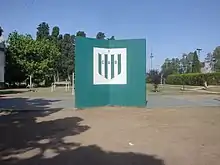
The stadium Florencio Sola was built in 1940 and is named after former President of the institution in the most glorious period in its history: Don Florencio "Lencho" Sola.
To celebrate its inauguration, a match took place against Independiente de Avellaneda which the team won 1–0 on a goal by Arsenio Erico. At this stage, the "Drill" played a record 39 matches unbeaten from 1950 to 1953. The stadium was considered advanced for its time because it was the first club of so-called "medium" to possess concrete grandstands, even before some of the big teams.
It is situated on the corner of Peña and Arenales in the city of Banfield. It recently opened a new area of two with silver trays, boxes, changing rooms and booths for radio and TV. The stadium holds 37,245 spectators. [1]
Roofed stalls of Sola
A plan was put together to extend the stadium. The board of directors of the club, decide to approve the project and work began in 2011. The extension is to build a second tray on the podium Eliseo Mouriño and also perform a second tray in the visitor sector. Also to be added are rounded elbows and transmission towers. Therefore, the stadium's capacity would be 45,326 spectators.
Head Office
The club's head office is located in Vergara 1635 (Banfield) and is the headquarters where athletes meet for various activities. Also, here are held steering committee meetings.
At headquarters, trainings are also held in other sports such as volleyball, futsal, skate, chess, children's football, gymnastics, taekwondo and the club has a training gym and a circle of lifetime partners, as well as a teamroom open to general public, where supporters gather.
Team records
- Seasons in first division: 73
- Biggest win achieved:
- in first division: 13–1 over Puerto Comercial de Bahía Blanca (6 October 1974) (biggest score ever in first division).
- in National B: 10–2 over Unión de San Juan (1987)
- in Primera B: 8–0 over All Boys (1962) in primera b 6–1 nueva Chicago 20/4/02
- in international tournaments: 4–1 over
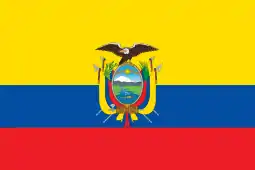 El Nacional (27 February 2007)
El Nacional (27 February 2007)
- Biggest defeats:
- First division: 1–8 to Estudiantes La Plata (1 June 1947)
- Primera B: 0–6 to Argentino de Rosario (1945)
- In international tournaments: 0–4 to
 Club América (7 March 2007)
Club América (7 March 2007)
- Best league position: 1st (champion) in 2009 Apertura
- Worst league position: 19th
- Top Scorer: Gustavo Albella: 136 goals (1945–51, 1954).
- Player with most appearances: Javier Sanguinetti: 423 games (1993–2008).
- International participations:
- Copa Sudamericana 2004: first round (eliminated by
 Arsenal de Sarandí)
Arsenal de Sarandí) - Copa Libertadores 2005: quarterfinals (eliminated by
 River Plate).
River Plate). - Copa Sudamericana 2005: eliminated by
 Fluminense.
Fluminense. - Copa Sudamericana 2006: first round (eliminated by
 San Lorenzo).
San Lorenzo). - Copa Libertadores 2007: first round
- Copa Libertadores 2010: round of 16 (eliminated by
 Internacional).
Internacional). - Copa Sudamericana 2010: round of 16 (eliminated by
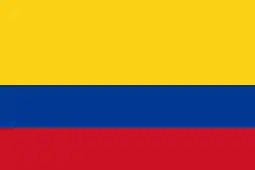 Deportes Tolima).
Deportes Tolima). - Copa Sudamericana 2016: Second Phase (eliminated by
 San Lorenzo).
San Lorenzo). - Copa Libertadores 2018: Phase 3 (eliminated by
 Club Nacional de Football).
Club Nacional de Football). - Copa Sudamericana 2018: Round of 16 (eliminated by
 Club Social y Deportivo Defensa y Justicia).
Club Social y Deportivo Defensa y Justicia).
- Copa Sudamericana 2004: first round (eliminated by
Soccer records
Banfield maintains the following records in the First Division:
- Between 1950 and 1953 they went undefeated at home for 49 consecutive games, spanning three years and 17 days.
- In the 1951 tournament, it was the first team out of the five greats of Argentine soccer that ranked first in an AFA tournament. He should have been the champion for the best goal difference (average goal, which was established soon after), but he had to play two finals with Racing Club.
- It was the first team that scored 5 goals against River Plate at the Monumental, 5–1 on June 20, 1951. That day, they scored four goals in just thirteen minutes, between the 20 and 33 minutes of the second half, circumstance who never endured River in stadium. Also that day was the first time that River lost by four goals difference at home so far.
- On October 6, 1974, by the National Tournament, he achieved the maximum victory of professionalism by defeating the Commercial Port of Bahía Blanca by 13 to 1. Banfield was the first and only team to score 13 goals in a single match. He also maintains the highest goal difference, with 12, in confrontations between teams of the same category in all professional divisions of the AFA.
- In that same match Juan Alberto Taverna established, with seven (7) goals, the record of so many converted by a player in a single match in all professionalism.
- Only Champion affiliated with the AFA in three XIX, XX and XXI Centuries (1899, 1920 and 2009).
- James Rodríguez of Banfield, became the youngest foreign player to debut in Argentine soccer at the age of 17.
- Banfield is the first team to ever compete in tournaments organized by the Association of Football Amateurs and Professionals (1931–1934) to be champion in professionalism.
Players
Current squad
- As of 28 March 2020.[11]
Note: Flags indicate national team as defined under FIFA eligibility rules. Players may hold more than one non-FIFA nationality.
|
|
Other players under contract
Note: Flags indicate national team as defined under FIFA eligibility rules. Players may hold more than one non-FIFA nationality.
|
|
Out on loan
Note: Flags indicate national team as defined under FIFA eligibility rules. Players may hold more than one non-FIFA nationality.
|
|
Notable players
- To appear in this section a player must have either:
- Played at least 100 games for the club.
- Set a club record.
- Played for their national team while at the club.
- Played at least 15 games with their national team at any time.
- Been part of a World Cup squad.
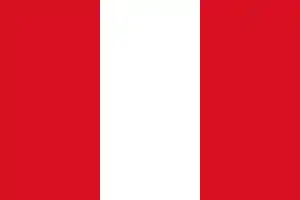 Jorge Alcalde (1943–45)
Jorge Alcalde (1943–45) Herminio Masantonio (1944)
Herminio Masantonio (1944) Gustavo Albella (1945–51), (1955–56)
Gustavo Albella (1945–51), (1955–56) Juan José Pizzuti (1947–50)
Juan José Pizzuti (1947–50) Eliseo Mouriño (1948–52)
Eliseo Mouriño (1948–52)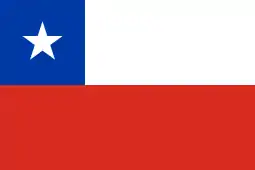
 Ernesto Álvarez (1948–56)
Ernesto Álvarez (1948–56) Oscar López (1960–65), (1970–71)
Oscar López (1960–65), (1970–71) Norberto Raffo (1961–66)
Norberto Raffo (1961–66) Sergio Vázquez (1966)
Sergio Vázquez (1966) José Ramos Delgado (1966–67)
José Ramos Delgado (1966–67) José Sanfilippo (1966–67)
José Sanfilippo (1966–67) Jorge Carrascosa (1967–69)
Jorge Carrascosa (1967–69) Ricardo Lavolpe (1971–75)
Ricardo Lavolpe (1971–75) Silvio Sotelo (1971–78)
Silvio Sotelo (1971–78) Héctor Veira (1974)
Héctor Veira (1974) Carlos Buttice (1981–82)
Carlos Buttice (1981–82) Daniel Delfino (1988–90), (1991–93), (1995–96)
Daniel Delfino (1988–90), (1991–93), (1995–96) Javier Sanguinetti (1990–93), (1994–08)
Javier Sanguinetti (1990–93), (1994–08) Javier Zanetti (1993–95)
Javier Zanetti (1993–95) Ángel Comizzo (1993–96)
Ángel Comizzo (1993–96) Julio Cruz (1993–96)
Julio Cruz (1993–96) Néstor Lorenzo (1994–95)
Néstor Lorenzo (1994–95) Pablo Paz (1995–96)
Pablo Paz (1995–96)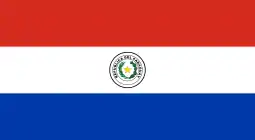 Guido Alvarenga (1995–96)
Guido Alvarenga (1995–96) Pedro Sarabia (1996–97)
Pedro Sarabia (1996–97) Walter Peletti (1996–97)
Walter Peletti (1996–97) Cristian Lucchetti (1996–02), (2005–10)
Cristian Lucchetti (1996–02), (2005–10)
 Mauro Camoranesi (1997–98)
Mauro Camoranesi (1997–98) Andrés San Martín (1997–99), (2002–05)
Andrés San Martín (1997–99), (2002–05) Carlos Leeb (1997–02)
Carlos Leeb (1997–02) José Luis Sánchez (1999–05)
José Luis Sánchez (1999–05) Daniel Bilos (2000–05), (2009)
Daniel Bilos (2000–05), (2009) Cristian Leiva (2001–02), (2003–06), (2012–14)
Cristian Leiva (2001–02), (2003–06), (2012–14) Josemir Lujambio (2001–02), (2005–07)
Josemir Lujambio (2001–02), (2005–07) Julio Barraza (2001–11)
Julio Barraza (2001–11)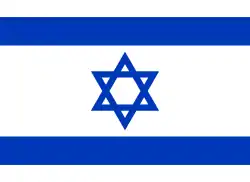
 Roberto Colautti (2002–03)
Roberto Colautti (2002–03) Marcos Galarza (2002–09), (2012–13)
Marcos Galarza (2002–09), (2012–13) Rodrigo Palacio (2003–04)
Rodrigo Palacio (2003–04) Jorge Núñez (2003–04)
Jorge Núñez (2003–04)
 Darío Cvitanich (2003–08), (2017–19)
Darío Cvitanich (2003–08), (2017–19)
 Gabriel Paletta (2005–06)
Gabriel Paletta (2005–06) Walter Erviti (2008–10), (2014–17)
Walter Erviti (2008–10), (2014–17) James Rodríguez (2008–10)
James Rodríguez (2008–10) Sebastián Fernández (2008–10)
Sebastián Fernández (2008–10) Santiago Silva (2009), (2016)
Santiago Silva (2009), (2016)
Presidents
- 1896-1898 Daniel Kingsland
- 1899-1900 Alfred John Goode
- 1901 Federick James Cassini
- 1902 George Stearn
- 1903-1904 Clement August Mason
- 1905-1906 Dante Terenziani
- 1906 R. Valenzuela
- 1907-1910 George James William Burton
- 1910: J. L. Howard
- 1911: L. J. Thiesen
- 1912: Guillermo Coo
- 1913–28: G. J. W. Burton 1
- 1928–30: Félix Sola (h)
- 1930–32: Rafael de Seta
- 1933: Américo Pisano
- 1934: Rafael de Seta
- 1935: Francisco Ventura
- 1936: Gerardo Martínez Abal
- 1937: Américo Pisano
- 1938–44: Florencio Sola
- 1945–46: Remigio Sola
- 1947–54: Florencio Sola
- 1955: Antonio Benito Ferranti 2
- 1956: Enrique Beltrán Simo
- 1957–59: Alfredo Gómez 2
- 1960–62: Valentín Suárez
- 1963–65: Juan Carlos Fontela
- 1966–68: Valentín Suárez
- 1969: Juan Carlos Fontela
- 1970–71: Carlos Ismael Soler
- 1972–74: Valentín Suárez
- 1975–77: Osvaldo Fani
- 1978–79: Manuel Salgado
- 1980: Aniceto Rodrigo 2
- 1980: Juan Carlos Mori
- 1981–83: Néstor Edgardo Villar
- 1984–85: Valentín Suárez 2
- 1985: Miguel M. Alberdi
- 1986: Atilio Pettinati 2
- 1986–87: Fernando Oscar Tomás 2
- 1987–89: Raúl Alfonso Muñiz
- 1989–91: Julio César Grigera
- 1991–93: Valentín Suárez
- 1993–95: Carlos Fontela 2
- 1995–96: Raúl Alfonso Muñiz 2
- 1996–98: Atilio Pettinati
- 1998–2012: Carlos Portell 2
- 2012–2018: Eduardo Spinosa 2
- 2018: Lucía Barbuto
- Notes
- 1 Died on 29 June 1928.
- 2 Resigned.
Managers
|
|
|
Filial clubs
Other Banfield clubs affiliated to AFA (Argentine Football Association).
| Province | Filial name | League | Address |
|---|---|---|---|
| Chaco | Atlético y Deportivo Banfield | Liga Saezpeñense de Fútbol | Rivadavia 547 – (3700) Roque S. Peña |
| Entre Ríos | Club Banfield | Liga Victoriense de Fútbol | San Juan s/n – (3153) Victoria |
| Club Atlético Banfield | Liga Paranaense de Fútbol | (3100) Paraná | |
| Buenos Aires | Club Atlético Banfield | Liga Deportiva Sampedrina | 11 de Setiembre 1220 – (2930) San Pedro |
| Club Atlético Banfield de Mar del Plata | Liga Marplatense de Fútbol | Triunvirato 1331 – (7600) Mar del Plata | |
| Córdoba | Club Deportivo Banfield | Asoc. Cordobesa de Fútbol | López y Planes 2786 – (5500) Córdoba |
| Club Atlético Banfield | Liga de Fútbol de Alta Gracia | Cervantes y 24 De Septiembre – (5186) Alta Gracia | |
| Formosa | Club Atlético Banfield | Liga Formoseña de Fútbol | T. 139 "E", Bo. Guadalupe – (3600) Formosa |
| Mendoza | Club Deportivo Banfield | Liga Sancarlina de Fútbol | Guevara s/n – (5569) Tres Esquinas |
| San Juan | Club Sportivo Banfield | Liga Veinticinqueña de Fútbol | M. Moreno s/n – (5443) Las Casuarinas |
| Santa Fe | Club Atlético Defensores de Banfield | Liga Casildense de Fútbol | Mitre 1937 – (2170) Casilda – 19 November 1914 |
| Santiago del Estero | Club Atlético Banfield | Liga Santiagueña de Fútbol | (4300) La Banda |
| La Pampa | Peña Banfileña de Castex (founded in 1996) | Contact to Mr. Domingo F. Vidal or Aldo Montaldo in town |
Honours
- Primera División (1): 2009 Apertura
- Copa de Honor Municipalidad de Buenos Aires (1): 1920
- Primera B Nacional (3): 1992–93, 2000–01, 2013–14
- División Intermedia (1): 1919
- Primera B (6): 1899, 1900, 1939, 1946, 1962, 1973
References
- Actividades deportivas at Banfield website Archived 27 October 2014 at the Wayback Machine, 8 Oct 2014
- Banfield Archived 20 September 2013 at the Wayback Machine
- Argentina 1897 at Historia y Futbol
- List of 2nd division champions at rsssf
- "Banfield se dio un gusto grande ante Lanús" Archived 11 March 2013 at the Wayback Machine, Clarín, 2008-03-08
- "Es la hora de Falcioni en Boca", 26 Noticias.com
- "Banfield lamentó contratar a La Volpe" at Fox Sports LA, 24 December 2011
- "La Volpe se fue de Banfield, pero apuntó: "El verso existe si el jugador es mediocre" at Infobae.com, 16 December 2011
- "Primera División de Argentina – Clausura 2012", ESPN, 24 June 2012
- "Taladro en llamas", Olé, 24 June 2012
- "Banfield squad". Soccerway. Retrieved 6 October 2018.